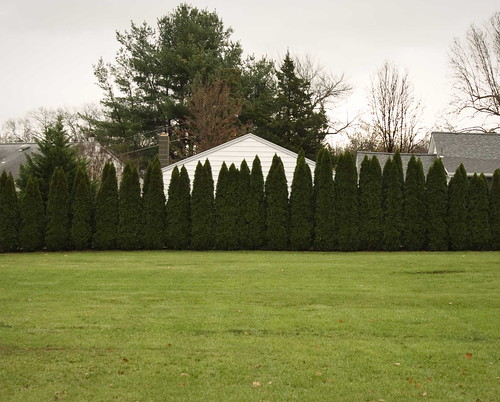 The trees are bare and gray. The lawn is brown and . . . . well, dead. No flowers. No foliage. Just . . . . bleh. It can be a little depressing, and certainly doesn’t make you feel like you’re putting your home’s best foot forward.
The trees are bare and gray. The lawn is brown and . . . . well, dead. No flowers. No foliage. Just . . . . bleh. It can be a little depressing, and certainly doesn’t make you feel like you’re putting your home’s best foot forward.
Take heart. Over the next several weeks, temperatures will gradually warm, and life WILL again appear outdoors. It’s still very early to actually do anything in terms of lawn care, but planning ahead can certainly be done now. Spring lawn care is important, as early season care has a big impact on lawns for the rest of the year.
One of the first and most obvious things that should be done to the lawn in early spring is removal of debris that has accumulated over the winter. Even if you painstakingly cleaned up all of those leaves and branches at the end of Fall, they have a tricky way of sending their friends to nest during the winter months. Wait until the soil has dried out somewhat, however, as working on a soggy turf can be quite detrimental to your grass. Raking the turf will remove matted accumulations of dead grass, but will do little for thatch problems.
Contrary to popular belief, it is not helpful to apply large amounts of nitrogen fertilizer first thing in the spring. While fertilizing turfgrasses in spring IS beneficial, it needs to be done in moderation. Heavy applications of nitrogen fertilizer in the spring can actually burn the grass, and cause serious lawn problems. And don’t be that neighbor that has to be “first.” March is not the time for fertilizing. Wait until the lawn has been mowed a few times before fertilizing, typically very late April or early May. Choose a quality lawn fertilizer that contains controlled release, slow-release, or water insoluble nitrogen. All of these terms refer to nitrogen sources that will release small amounts of nitrogen to the turf over an extended period of time, which leads to more uniform and healthy lawn growth, and less “burning.” These materials are especially important to use in spring.
Many homeowners question when to apply crabgrass herbicides to the lawn. Crabgrass generally begins germinating around the middle of May, so a target of early May, or even late April, is usually accurate. Pregrowth crabgrass herbicides need to be put down prior to crabgrass germination in order to work, so it’s better to apply slightly early rather than too late . . . . but, again, not in March. Many preemergence crabgrass herbicides come mixed WITH fertilizer, so you can actually do both steps in one.
Spring also is a popular time for seeding new lawns, although it is actually not the most favorable time. If it can be delayed, early fall is actually the optimum time because fall weather conditions are more favorable for the new turf, and weed growth pressure is much lower. That being said, Spring seeding can certainly work out very well, as long as hot weather doesn’t set in before the new lawn is well established. If starting a new lawn in spring, be sure to seed it by mid-April to avoid that problem. And NOT immediately after using herbicides.
If you’re still feeling a little uncertain about when to seed, use weed killer, or fertilize, you can always ask your friendly neighborhood nursery worker or hardware store employee. And today’s products usually have a pretty clear set of “when to do what” instructions right on the back of the packaging. Looking ahead and doing a little planning now can make your job of bringing and keeping your lawn to life a whole lot easier. Especially since we are all looking forward to bringing some color back to our outdoors . . . . even if we’re not necessarily looking forward to mowing the lawn again.
Looking for a new home? Click here to search the entire Garden State MLS.
Flickr Photo Credit By like totally

 Site by Ha Media
Site by Ha Media
Leave a Reply